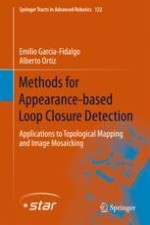Mapping and localization are two essential tasks in autonomous mobile robotics. Due to the unavoidable noise that sensors present, mapping algorithms usually rely on loop closure detection techniques, which entail the correct identification of previously seen places to reduce the uncertainty of the resulting maps. This book deals with the problem of generating topological maps of the environment using efficient appearance-based loop closure detection techniques. Since the quality of a visual loop closure detection algorithm is related to the image description method and its ability to index previously seen images, several methods for loop closure detection adopting different approaches are developed and assessed. Then, these methods are used in three novel topological mapping algorithms. The results obtained indicate that the solutions proposed attain a better performance than several state-of-the-art approaches. To conclude, given that loop closure detection is also a key component in other research areas, a multi-threaded image mosaicing algorithm is proposed. This approach makes use of one of the loop closure detection techniques previously introduced in order to find overlapping pairs between images and finally obtain seamless mosaics of different environments in a reasonable amount of time.
